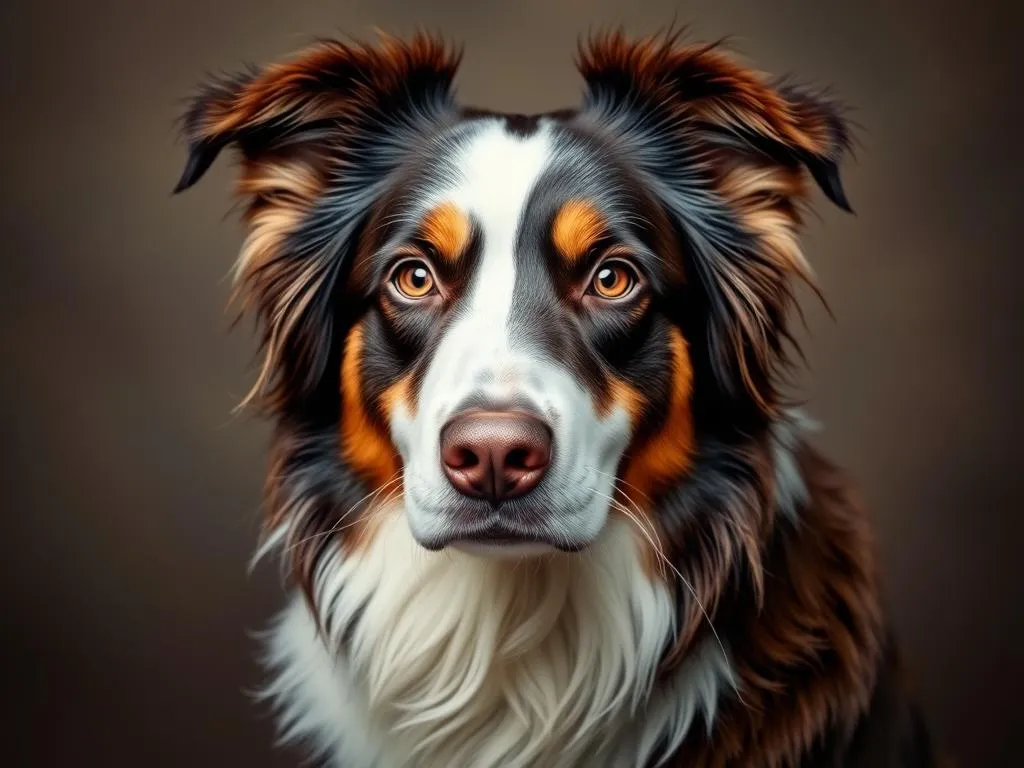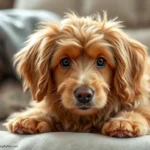
Introduction
Border Collies are renowned for their intelligence, agility, and boundless energy, making them a beloved breed among dog enthusiasts and working professionals alike. Their stunning appearance, coupled with their exceptional herding abilities, has secured them a place in the hearts of many dog lovers across the globe. But beyond their impressive skills, Border Collie colors and patterns play a significant role in their appeal.
This article will delve into the various colors and patterns that characterize this remarkable breed. Understanding these traits is essential not only for potential owners looking to adopt a Border Collie but also for those interested in the breed’s standards and genetics. The colors and patterns can affect perceptions of personality and suitability for specific environments, as well as influence owner preferences.
In this comprehensive guide, we will explore the history and characteristics of Border Collies, the genetics behind their stunning colors, the common hues and patterns found in the breed, and considerations for choosing a Border Collie based on these traits. Additionally, we will discuss the health implications linked to specific colors and provide tips on responsible breeding practices.
Understanding Border Collies
Brief History of the Breed
The Border Collie originated in the border region between England and Scotland, where they were bred primarily for herding sheep. The breed’s development began in the late 19th century, with a focus on creating an intelligent and agile dog capable of managing livestock in challenging terrains. Over the years, Border Collies have become synonymous with excellence in herding competitions and are often considered the ultimate working dog.
Characteristics of Border Collies
Physically, Border Collies are medium-sized dogs, typically weighing between 30 to 45 pounds and standing around 18 to 22 inches tall at the shoulder. They possess a double coat that can vary in length, offering protection against the elements. Their expressive eyes, often described as “the eyes of a herder,” are a notable feature that helps them communicate effectively with their human handlers.
In terms of temperament, Border Collies are highly intelligent, energetic, and eager to please. They thrive on mental and physical stimulation, making them ideal companions for active families or individuals who enjoy outdoor activities. Their intelligence can sometimes lead to stubbornness, so early training and socialization are crucial.
The Genetics of Color in Border Collies
Basic Genetics Terminology
To understand Border Collie colors and patterns, it’s essential to grasp some basic genetics terminology. Genes are the basic units of heredity, and each dog inherits a combination of genes from its parents. Dominant genes will express themselves over recessive ones, influencing the dog’s physical appearance, including coat color.
Several genes specifically affect coat color in dogs, including those responsible for black, red, and merle patterns. By understanding how these genes interact, we can better appreciate the diversity in Border Collie colors.
How Color Genes Influence Appearance
The appearance of a Border Collie’s coat is dictated by the complex interplay of various genes. For instance, a dog may inherit a dominant black gene, which will overshadow any recessive red genes present. Similarly, the presence of the merle gene can create striking patterns that further enhance the dog’s looks.
This genetic diversity allows for a wide range of colors and patterns, making each Border Collie unique in its appearance.
Common Border Collie Colors
Solid Colors
Solid colors in Border Collies include hues such as black, red, blue, and chocolate.
- Black is the most recognized color, often associated with the classic image of a Border Collie.
- Red variations, while less common, are becoming increasingly popular and can range from a deep mahogany to a lighter, sandy color.
- Blue Border Collies feature a diluted black coat that can appear almost gray, while chocolate variations present a rich brown tone.
These solid colors can be striking on their own, but they are often seen in combination with patterns, adding to their visual appeal.
Bi-Color Variations
Bi-color Border Collies showcase combinations such as black and white or red and white.
- The black and white combination is perhaps the most famous, often seen in herding competitions and media portrayals of the breed. This striking contrast highlights their athletic build and expressive faces.
- Red and white Border Collies offer a warm, inviting appearance that is equally charming.
Bi-color variations are popular among owners, as they often exhibit unique markings that add character to the dog’s appearance.
Merle Patterns
The merle pattern is a distinctive coloration characterized by a mottled or marbled appearance. Merle Border Collies can have blue, red, or black backgrounds with lighter patches, creating a stunning visual effect.
However, it’s essential to note that merle coloration comes with specific health considerations. This pattern is linked to various genetic health issues, such as hearing and vision problems, making responsible breeding practices crucial.
Sable and Brindle Patterns
Sable and brindle patterns are less common but equally captivating.
- Sable Border Collies feature a coat that blends shades of brown and black, often with a lighter undercoat. This pattern can create a beautiful, dynamic appearance that changes with the light.
- Brindle patterns consist of a mix of dark and light stripes, creating a unique and eye-catching look.
Both sable and brindle colors are rarer, making them intriguing options for those looking for something different in their Border Collie.
Patterns Found in Border Collies
The Classic Black and White Pattern
The classic black and white pattern is iconic among Border Collies. This combination not only showcases the breed’s athleticism but also emphasizes their keen expressions. Typically, black and white Border Collies possess markings that include a white blaze on the face, a white chest patch, and white legs.
The black and white pattern is often associated with a strong working drive and intelligence, making these dogs particularly desirable for herding tasks.
Ticking and Markings
Ticking refers to small flecks of color, often seen in white areas of the coat. This aesthetic detail adds depth to a Border Collie’s appearance and is often appreciated by owners.
In addition to ticking, Border Collies may exhibit various markings beyond the classic patterns, such as face markings, chest patches, and leg markings. These unique traits contribute to the individuality of each dog, making them even more special to their owners.
Rare Patterns
Border Collies can sometimes exhibit rare patterns such as tri-color or extensive merle.
- Tri-color dogs typically display a combination of black, white, and tan or brown, creating a striking appearance that stands out in a crowd.
- Rare merle patterns, while visually stunning, require careful consideration due to associated health risks.
These less common patterns may be in higher demand among enthusiasts and breeders, often impacting their market value and desirability.
Choosing a Border Collie Based on Color and Pattern
Aesthetic Preferences
When selecting a Border Collie, aesthetic preferences can significantly influence a potential owner’s choice. Some may gravitate toward solid colors for their classic appeal, while others may prefer the dynamic look of bi-color or merle patterns. Cultural perceptions also play a role; certain colors might be favored in specific regions or communities.
Implications for Training and Behavior
Interestingly, some studies suggest that a dog’s color may affect perceptions of temperament. For instance, owners might perceive black Border Collies as more assertive, while lighter-colored dogs may be viewed as more approachable.
However, it’s essential to remember that a dog’s training and behavior are primarily influenced by genetics, upbringing, and socialization rather than coat color alone. Understanding this can help potential owners focus on the qualities that matter most in a companion.
Health Considerations Related to Color
Genetic Health Issues
Certain Border Collie colors and patterns are associated with specific genetic health issues. For example, merle dogs are prone to deafness and vision problems, which can arise from improper breeding practices. Responsible breeders aim to minimize these risks by adhering to ethical breeding guidelines, ensuring that both the health of the dog and the integrity of the breed are prioritized.
Regular Health Checks
Regardless of color, all Border Collies benefit from regular health checks. Owners should work closely with their veterinarians to monitor for breed-specific health issues and ensure their dogs receive appropriate care. Understanding the genetic predispositions associated with a Border Collie’s color can also guide owners in making informed decisions about their dog’s health and well-being.
Conclusion
In summary, understanding Border Collie colors and patterns is crucial for prospective owners and enthusiasts alike. The diverse array of colors and patterns enhances the appeal of this remarkable breed while also reflecting important genetic considerations.
From the classic black and white to the rare merle, each Border Collie offers a unique visual experience that can be deeply rewarding. As potential owners, it’s essential to consider not only the aesthetic qualities of a Border Collie but also the health implications associated with specific colors and patterns.
By choosing a Border Collie based on informed decisions, you can ensure a happy and healthy life for your new companion, while also celebrating the beauty and diversity of this incredible breed.









